Harm and fermentation treatment of livestock and poultry manure
The regulations on the Prevention and Control of pollution from large-scale farming of Livestock and Poultry adopted by the 26th Executive meeting of the State Council on October 8, 2013 clearly stipulates that the state supports and encourages the comprehensive utilization of manure, biogas, power generation and organic fertilizer, encourage and support the combination of planting and breeding to absorb and utilize livestock and poultry breeding wastes, and promote the local utilization of livestock and poultry manure, sewage and other wastes. These regulations help to promote the flow of wastes such as livestock and poultry manure to comprehensive utilization, so as to reduce environmental pollution from the source.
1. Characteristics of livestock and poultry faeces:
The main characteristics of livestock and poultry faeces are:
(1) rich in organic matter and rich in nutrition.
(2) it contains pathogenic bacteria, which is not safe in epidemiology.
(3) there are a lot of heavy metal pollution and antibiotic residues in livestock and poultry manure in some areas.
It is reported that livestock and poultry feces are rich in crude protein, crude fat, crude fiber, minerals and nutrients such as calcium, phosphorus, potassium and nitrogen, which can not only be used as feed to feed pigs, chickens and cattle, but also a high-quality fertilizer source with high application value. Therefore, a large number of livestock and poultry manure were composted and fermented into organic fertilizer to realize the harmless treatment and resource utilization of livestock and poultry manure. Reducing the application of chemical fertilizers is of great significance to protect the ecological environment and promote the sustainable development of agriculture.
Generally, livestock and poultry feces contain a large number of pathogens (such as salmonella, Escherichia coli, respiratory enteroviruses, etc.), parasites and weed seeds, so livestock and poultry manure must be fermented at high temperature.
2. the way of resource utilization of livestock and poultry manure-- biological high temperature aerobic fermentation.
3.2.1 harm of direct application of livestock and poultry manure or incomplete maturity
If livestock and poultry manure is applied directly without maturity or if it is not completely mature, the consequences will be extremely serious.
(1) Root burning and seedling burning: incomplete organic fertilizer is applied to the soil and begins to ferment in a suitable environment. If the fermentation site is close to the root and the plant is small, the heat generated by fermentation will affect crop growth and cause plant death in serious cases.
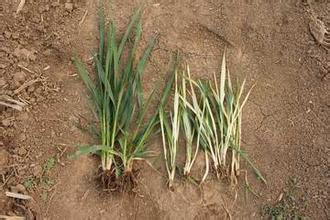
Burn roots and seedlings
(2) Infectious diseases and insect pests: unmature or incomplete organic fertilizers contain Escherichia coli, Ascaris lumbricoides and other germs and pests, which will lead to the spread of diseases and insect pests.
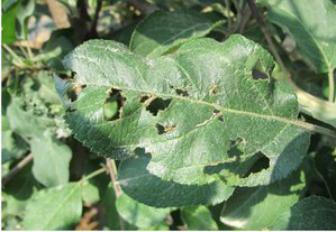
Infect diseases and insect pests
(3) heavy metal pollution: there are high contents of mercury, chromium, cadmium, lead, arsenic and other heavy metals in livestock and poultry feces in some areas. direct application will cause secondary pollution to the environment, inhibit plant growth and cause plant heavy metals to exceed the standard.
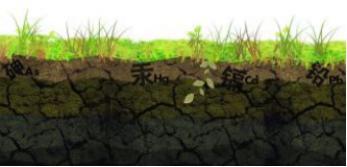
Heavy metal pollution
(4) antibiotic residue pollution:
Since the discovery of antibiotics in the early 19th century, antibiotics have been widely used in the prevention and treatment of human and animal diseases. Antibiotics are not only used as drugs to treat animal diseases, but also used as feed additives to promote animal growth. Among them, tetracycline antibiotics are the most important class of veterinary antibiotics. Because of their broad spectrum, high quality and low price, tetracyclines have become the most widely used antibiotics in China's animal husbandry industry. Studies have shown that tetracycline antibiotics can not be fully absorbed after entering the animal body, and about 75% are excreted in the form of prototypes or parent compounds. Because of their complex structure, difficult biodegradation and good water solubility, these antibiotics are easy to be stored and accumulated in the environment. The entry of these antibiotics into the environment will have a serious impact on microorganisms and plant populations, and then cause harm to human health and survival, so they are regarded as important pollutants. Other agricultural and veterinary antibiotics also have residues and environmental pollution after application, which is a serious threat to human health and ecological security.
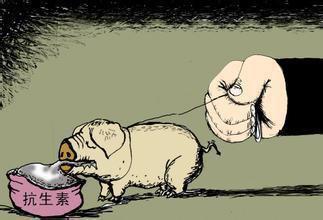
Antibiotic residual pollution 3. Biological high temperature aerobic fermentation
The aerobic fermentation process of livestock and poultry manure is a microbiological process that uses bacteria, actinomycetes, fungi and other microorganisms to promote the biochemical transformation of biodegradable organic matter to stable humus in livestock and poultry manure. The soluble small molecular organic matter in livestock and poultry feces is absorbed and utilized by microorganisms through their cell walls and cell membranes. On the other hand, the insoluble macromolecular organic matter is first attached to the microbial body, and the extracellular enzymes secreted by the microorganism are decomposed into soluble small molecular substances, and then sent into the microbial cells to be used. Through the process of synthesis and decomposition of microorganisms, a part of organic matter is oxidized into simple inorganic substances, and the energy needed for life activities is provided, and another part of organic matter is transformed into new cellular substances to make microorganisms proliferate. Aerobic composting is an economical and effective method to treat livestock and poultry manure by using aerobic bacteria and oxygen to ferment livestock manure at high temperature. it has the advantages of complete decomposition of organic harmful substances, short composting period, low odor, good control and so on. It uses the microbial community to decompose organic matter in a specific environment and improve livestock and poultry manure into stable humus for fertilizing fields or soil improvement.
The fermentation process of livestock and poultry manure is often divided into three stages. The first stage is the middle temperature stage, in the early stage of composting, thermophilic bacteria are more active, in the process of conversion and utilization of organic chemical energy, part of the chemical energy is converted into heat energy. The end of the intermediate temperature stage is marked by the rise of the reactor temperature to 45 ℃. The second stage is the high temperature stage, when thermophilic bacteria begin to be inhibited or even die, thermophilic bacteria take the place of thermophilic bacteria, the residual and newly formed soluble substances in organic matter continue to be decomposed, humus begins to form, and the oxygen demand of compost decreases gradually. In the high temperature stage, the oxygen consumption rate is high, the temperature is high, and the degradation rate of volatile organic compounds is high. The third stage is the ripening stage, in which the temperature is low, the oxygen consumption rate is low, the voidage increases, and the humus increases and stabilizes. Although some plant nutrients in livestock and poultry manure, such as nitrogen and phosphorus, are volatile components, because the temperature in the whole composting process is generally 30-70 ℃, the nutrients will not be volatile. And harmless should keep the stack temperature above 55 ℃ for 5-7 days in order to kill pathogenic microorganisms and parasitic eggs and play the role of disinfection.

Schematic diagram of biological high temperature aerobic fermentation process 4, quality assurance and after-sales service commitment
(1) Product quality commitment: the microbial agents used are patented high-efficiency microorganisms + enzyme preparations developed and produced by our company, which are safe, non-toxic and do not produce secondary pollution.
(2) time limit commitment: promise to complete the project on schedule.
(3) our company has many years of project management experience under similar conditions, and has always paid great attention to the environmental protection and civilized construction work of the project, creating environmental protection and civilized construction model projects in many provinces and cities.
- Prev
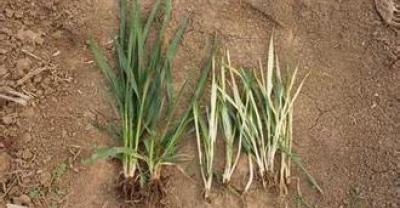
Secret of raising chickens: Acanthopanax senticosus is used in native chicken breeding, which can't be stopped by making money.
Acanthopanax senticosus is also one of the common traditional Chinese medicines, generally growing in the three northeastern provinces, Hebei and Shanxi, and rare in the south. Growing in the forest and by the roadside, it is also a nursery.
- Next
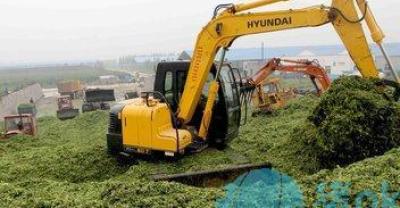
"traditional Chinese Medicine Culture" talking about synovial sac mycoplasma from the point of view of traditional Chinese medicine
Synovial sac mycoplasma synovial sac mycoplasma disease, also known as chicken infectious synovitis, typical symptoms are swelling of tarsal and metatarsal joints, lameness, and even deformation.
Related
- On the eggshell is a badge full of pride. British Poultry Egg Market and Consumer observation
- British study: 72% of Britons are willing to buy native eggs raised by insects
- Guidelines for friendly egg production revised the increase of space in chicken sheds can not be forced to change feathers and lay eggs.
- Risk of delay in customs clearance Australia suspends lobster exports to China
- Pig semen-the Vector of virus Transmission (4)
- Pig semen-the Vector of virus Transmission (3)
- Five common causes of difficult control of classical swine fever in clinic and their countermeasures
- Foot-and-mouth disease is the most effective way to prevent it!
- PED is the number one killer of piglets and has to be guarded against in autumn and winter.
- What is "yellow fat pig"? Have you ever heard the pig collector talk about "yellow fat pig"?

